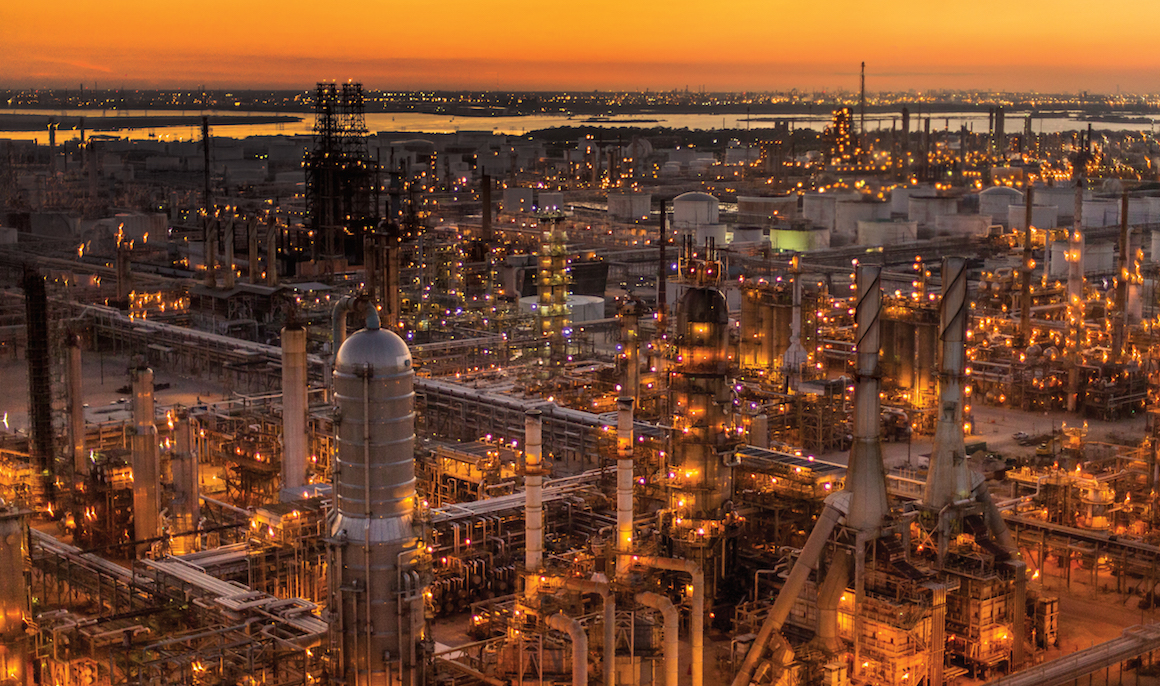It’s not often that manufacturing is held up as the symbol of digital innovation, but that is rapidly changing thanks to the drones, robots and data at the disposal of today’s workers.
From new devices to complex algorithms to data analytics, the digital tools in today’s facilities are ensuring safer operations, faster decision-making, seamless communication and a lighter emissions footprint. This is not a technology takeover, but a way to enhance human performance via new breakthroughs.
And these breakthroughs are revolutionising the production of the energy needed in our daily life. Digital tools are helping operators safely turn oil and natural gas into fuel and feedstocks. Refineries and chemical plants, too, are running more efficiently on a smaller carbon footprint during this digital manufacturing transformation.
Here are just a few examples of some of that work going on throughout ExxonMobil’s facilities.

ExxonMobil has used robots that move through the inside of pipelines, scanning their insides to measure their linings. That’s given workers the power to see behind walls with almost X-ray vision, an inside look that ultimately translates into safer operations. In 2019, workers in Papua New Guinea carried out an ExxonMobil global first when it used a robot with Acoustic Resonance Technology – a non-destructive process that uses sound like a sonar to measure the inside of pipelines.

No longer just a cool gadget, drone technology today offers plant personnel an almost superhuman ability to inspect sky-high towers from the ground. They can also fly inside holding tanks to video their walls so workers no longer have to make the climb up and into these structures. These drones can now efficiently perform tasks that used to require multiple workers and pieces of equipment.
In Singapore, ExxonMobil is increasing safety and minimising risks of working at height by using customised drone solutions through local vendors and in-house qualified pilots performing drone inspections for equipment. This team was among the first in ExxonMobil globally to develop these skills, creating a new site-wide safety standard on drone deployment that can be emulated by other sites globally. This team’s efforts resulted in ExxonMobil in Singapore being awarded its first-ever drone operator permit licenses by the Civil Aviation Authority of Singapore.

Using the most advanced data analytics, ExxonMobil is creating new dashboards that put the right data in the hands of decision-makers. This is enabling faster and better insights, uncovering new synergies and making complex operations more efficient. Specifically, these dashboards can help engineers make sense of a wealth of data and uncover hidden patterns from sensors and other critical equipment within a facility.

Thanks to advanced mobile applications, workers today can carry their own command centre in their pockets. New handheld devices can provide operators transparent views of the plants, no matter where they are within the vast complexes. Other benefits include being able to access and enter numerous data points, such as geolocation and pressure, and overseeing the status of countless pieces of equipment – all while out in the field.
These are just a handful of examples of technologies that are built off of and feed into ExxonMobil’s digital foundation, a data infrastructure that enables scaling the company’s technology across facilities around the world.
In the same way that people around the world are doing more with a quick swipe on their phones, the people operating complex manufacturing facilities are scoring new gains in safety and efficiency, and helping these sites operate on a lighter carbon footprint.




